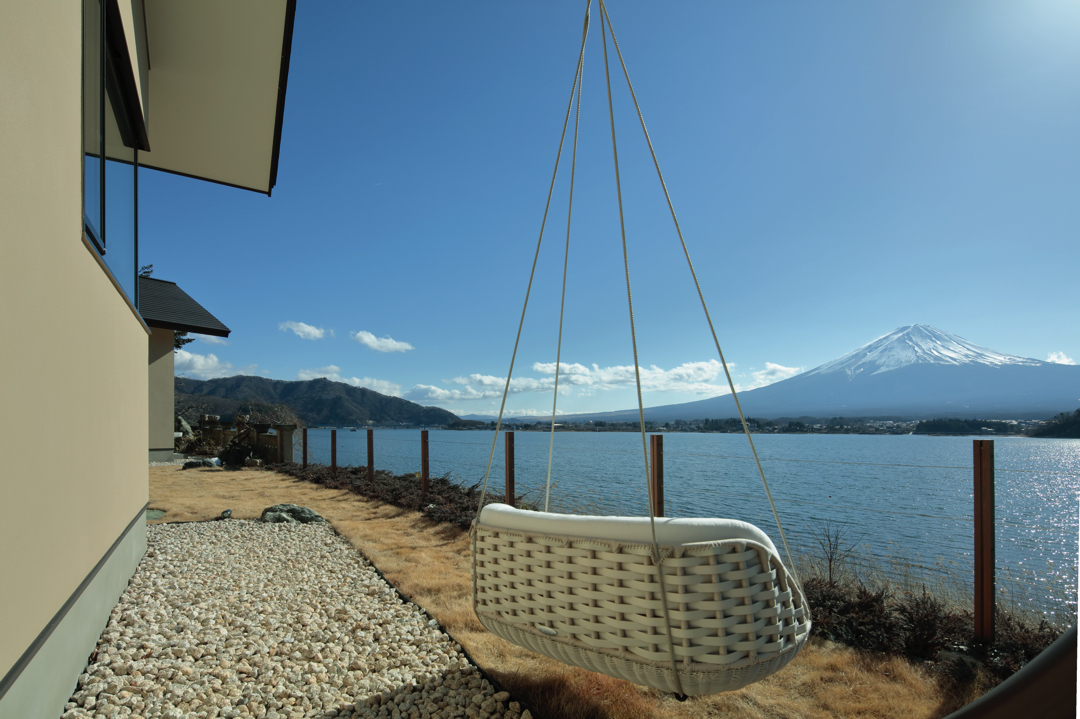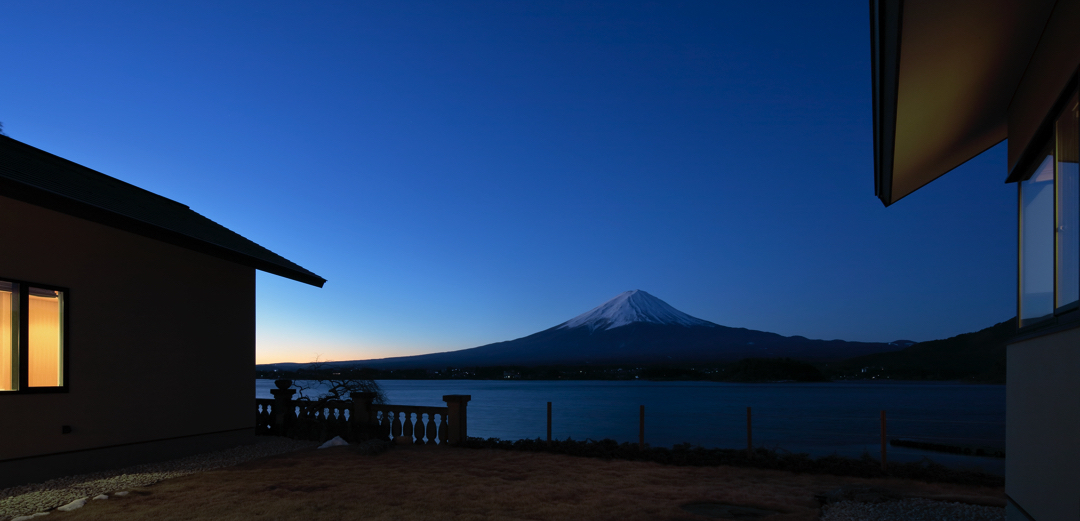
Spectacular view of Mt. Fuji
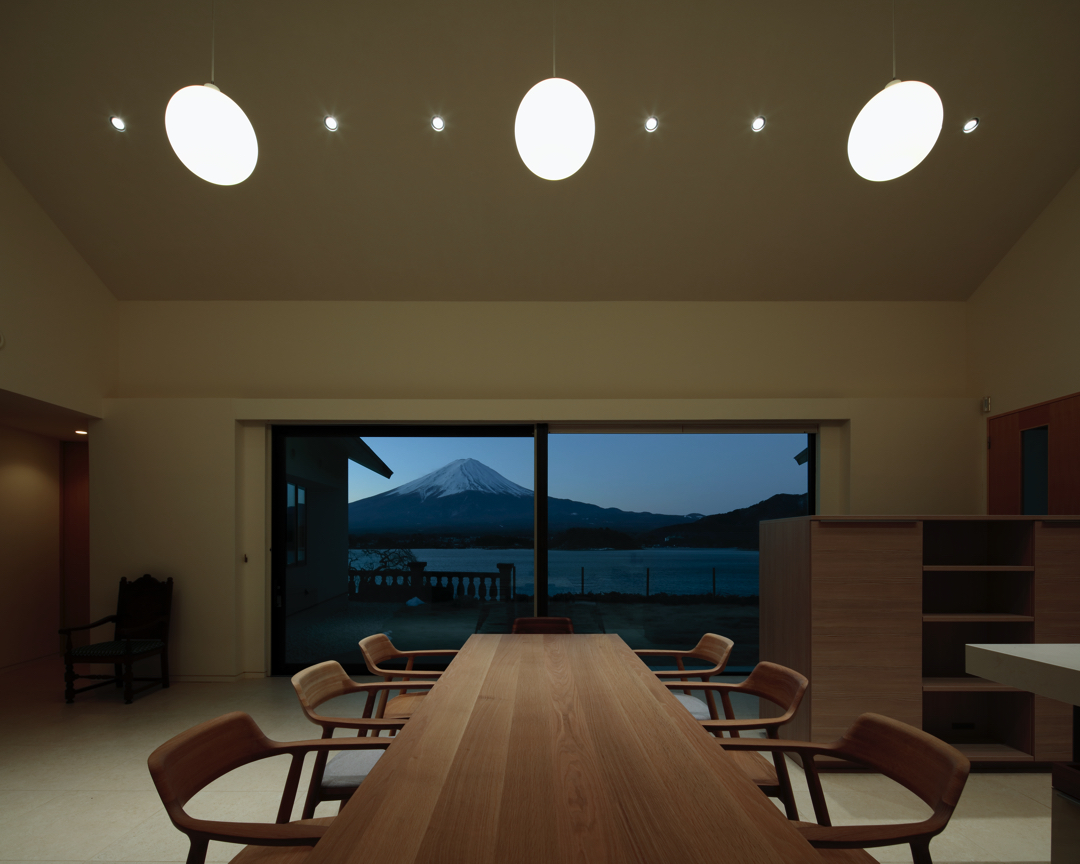
It was my first time to design in such a place. “How can you fuse the lake with the spectacular scenery of Mt. Fuji?” I asked myself throughout the whole design process.

On the other hand, the view should not be the only factor that determines the quality of the space. We used an anemoscope to realize a comfortable climate data. Through scientific verification, accumulated data is continuously incorporated into the design process. This kind of data-driven design/creative method is undiscovered territory in Japan.
“What should I do to show the uniqueness of a villa in architecture?” I wondered. “I should do what is considered impossible in the main residence.” The central aim of building a villa should be to help develop a change in pace as you leave the busy life of the city. Surrounded by the natural tranquility, the owner can relax and reorganize. Architecture must be the reflection of such individual lifestyle. With that in mind, I decided to create a ceiling height as high as 5m.
The owner preferred a flooring with whiteness and a natural atmosphere as much as possible. We are considering various tree species and finally adopted Maple of Scandinavian Living. It is totally different from the artificial composite flooring with a woodgrained sheet, it is a flooring with harmony of grain while taking advantage of the texture of the material. It was a very fresh combination for me who often chooses a dark hue.
Light and whitish color
Calm and serene
This brightness makes it possible to express the quiet and calm atmosphere of the space, as the owner specifically requested. It is bright and whitish in color, giving the whole elegance. In this way, I believe that such collaboration processes are very important, especially in housing design. I must admit that my imagination as an architect has limitations, but often times a client’s idea that ignite the creative process. I cannot emphasize enough that such powerful input from clients can contribute to the design process. I will always accept this challenge as an architect.
The Owner already had preferences and demands of architecture and interiors. She showed collections of architectural design photos, which helped to convery concrete images in addition to words to us. In this way, not only the language but also the visual information exchange is considered to be very effective from the viewpoint of information sharing, and also because it conveys the more accurate image of the owner.
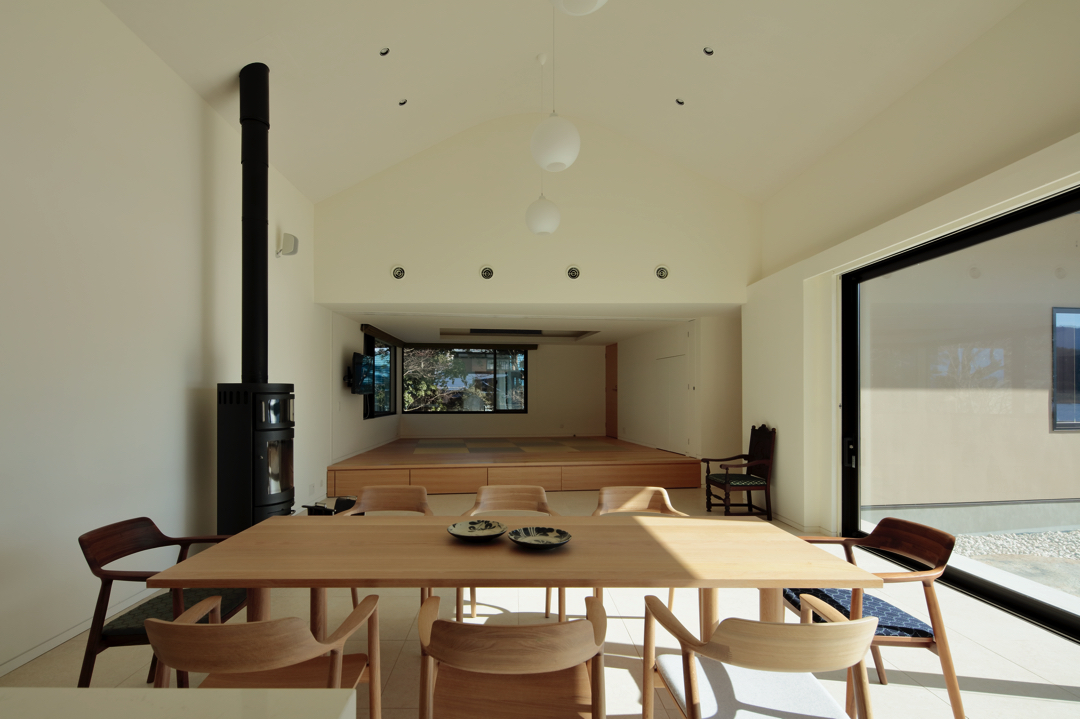
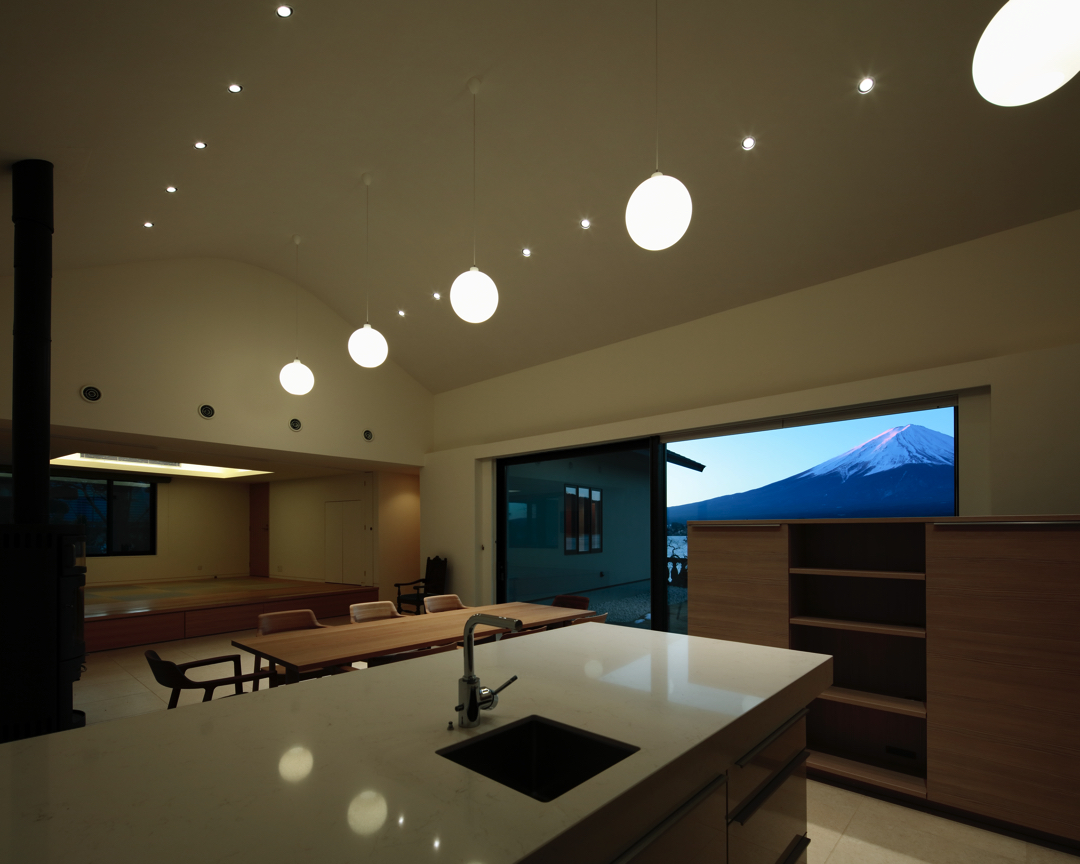
“I’d like to take time to cook when I come to the villa,” the owner said. Normally I will design a kitchen, but this time I work with a high-end German kitchen maker called Poggenpohl.
Puzzling request
In response to subtle and puzzling demands such as “It’s neither open nor closed,” we have placed cooking stove and other storage on the hidden side of the kitchen. We have set up an island kitchen that prep and serve meals for family and guests. A relatively tall storage shelf was installed to block visitors’ eyes to the workplace. Open kitchen is very popular today, but user preferences are always unique like this. Whether it’s open or closed, why can’t we take the best of both worlds?

Based on the request to keep things that existed in the old house, we set sculptures in the garden as a view from the window of each room. The antique stained glass was carefully reinstalled in the bathroom window. By doing so, the villa’s history and heritage will be praised and cherished for generations.
I always drove a car to the site of Kawaguchiko. Since I do not own a villa by myself, this simulated the life of the owner of the villa. As Mount Fuji approached, I was released from my daily life. When I returned to town, my tension gradually came back. It was such an unforgettable phenomenon. Thinking about the design of the villa while driving, I noticed the importance of switching it on and off.
It was a deeply embracing project that allowed us to catch a glimpse of an almost cross-cultural experience.
The American Architecture Prize 2017 Honorable Mention
Featured in NHK TV Program “The Mark of Beauty”
Blog『NHK「美の壺」の取材を受けて考えたこと』(in Japanese)
